One of the charms of modern gaming devices is their capability to emulate old gaming devices and play old games — often at a better quality than what was capable in the past.
And for many — me included —the Steam Deck is the perfect emulation device to emulate old games from the likes of Nintendo, Sony, Sega and Co. Different tests from the community have shown the Steam Deck can emulate most PlayStation 3 games (though with some issue).
To make this possible, you need to install different emulation apps like RetroArch, Cemu, Yuzu, and more per platform you want to play. There are two methods to get all the various emulators running. You either install them all by hand or use one of the two automated solutions below.
I will show you what it needs to get them up and running in this guide. You have a choice between EmuDeck and RetroDeck.
EmuDeck 2.0 vs RetroDeck: What are the differences?
While both tools do more or less the same, there are still some key differences between EmuDeck and RetroDeck. From the RetroDeck FAQ:
Apart of that from the user point of view EmuDeck and RetroDECK may sound similar but technically they're completely different. Emudeck it's a shell script that it's downloading all the emulators for you from various sources (flathub and appimage mainly) and writing all its data inside your filesystem.
RetroDECK is a single application that works in a sandbox, that means that is not writing directly in your filesystem except for two folders: /retrodeck and the flatpak default folder /.var/net.retrodeck.retrodeck. This brings more safety and avoid that other applications will clash together.
And:
TL;DR: Flatpak is more solid and safe as everything is contained in a sandbox environment so whatever mess you do inside of it is not reflecting into your real system and you are sure that SteamOS3 update will not flush all your configs. Moreover your emulated games are separated from your Steam games.
However, it also seems that RetroDeck supports fewer platforms than EmuDeck out of the box.
How to install EmuDeck
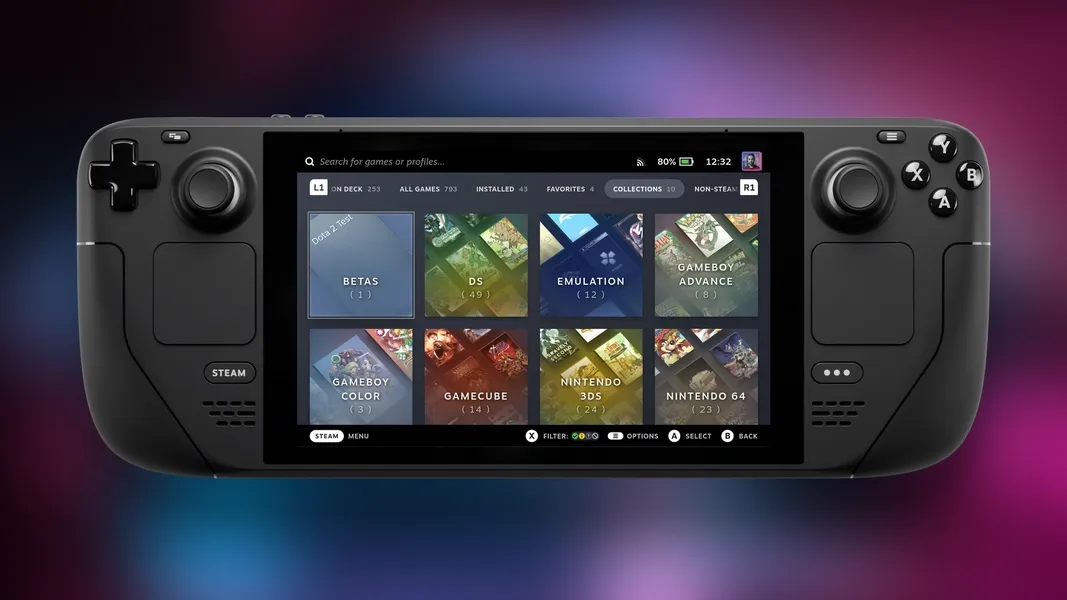
EmuDeck is the older option of the two and the one I used.
It is also the most involved option. Unlike RetroDeck, EmuDeck is a script that installs all the different emulators, handles the configuration for you, and allows you to add your ROMs to the Steam Library.
Here’s what you have to do:
- If you plan to load your ROMs onto your SD Card, you must first format it using the gaming mode on the Steam Deck. (If you have already done this, skip this). Click the
Steam button, go toSettings,Systemand thenFormat SD Card. Remember, everything on the card will be deleted when you do this. - We first need to download the EmuDeck script. Click the
Steam button, go down toPower, and thenSwitch to Desktop. Wait for the Deck to reboot. - On the desktop, open your browser of choice, go to
emudeck.comand download the installer at the bottom of the page. Run it. - During the installation process, you have the choice between an autonomous installation, and an “
expert one”. Choose the easy option if it’s the first time you install EmuDeck. - Follow the guide and pick what options suit you the best. Don’t forget to choose the SD card when prompted.
- After the installation has finished, you need to close Steam.
Right-click the Steam iconin the bottom taskbar, and close Steam. - The next step is to add all your ROMs and BIOS files to the correct folders. For EmuDeck, these are
/Emulation/romsand/Emulation/bios. I can’t tell you legally where to find these files exactly, but if you were to google forretroarch biosand stumble upon an Internet Archive link, you might be pleased. Move the unpacked files to their correct location. (Here are different ways to transfer files to your Steam Deck.) For the ROMs, you have subfolders for the other systems. Be sure to copy the files to the correct location. - Now open
Steam Rom Manager. ClickPreviewtop left, thenGenerate App Listat the bottom. Steam Rom Manager should pull in all your ROMs if they are in the correct location. Usually, it will also download artwork for every different game. However, this sometimes doesn’t work for various titles. In that case, you can add artwork manually. You can find them over at SteamGridDB. (This process can take a long time. Head toEvent Log, and wait forAll available image urls retrieved. That’s when you know the process is done. Head back toPreview.) To finish, hitSave app list. Wait for it to be done. - You can now close Steam Rom Manager again and return to the
Gaming-Mode. - If you head to your library and then to
Collections, all the folders for the different systems should have been created. From here, you can launch any game you want. Alternatively, you can launchEmulationStation (ES-DE)to see everything in a proper environment. - You’re done!
After setting this up, you can play whatever you like. Usually, EmuDeck should also have enabled gyro-support for systems like the Wii U and the Switch.
Whenever you want to update EmuDeck, you only need to run the installer once more. It should download the latest version when connected to the internet. However, when updating, choose expert mode. This way, you’re sure none of your custom configurations gets overridden.
Also, the developers provided a cheat sheet for the different inputs and supported file formats.
How to update EmuDeck
Since the release of EmuDeck 2.0, the update process of EmuDeck has been fairly simplified:
To update the emulation suite, all you have to do is start the EmuDeck icon on the Desktop, and let it download the update for the installer. Next, you can simply apply the update by either choosing the Quick Update or the Custom Update. Choose the Custom Update if you have applied any customizations to the settings of any of the different emulators.li
How to install RetroDeck
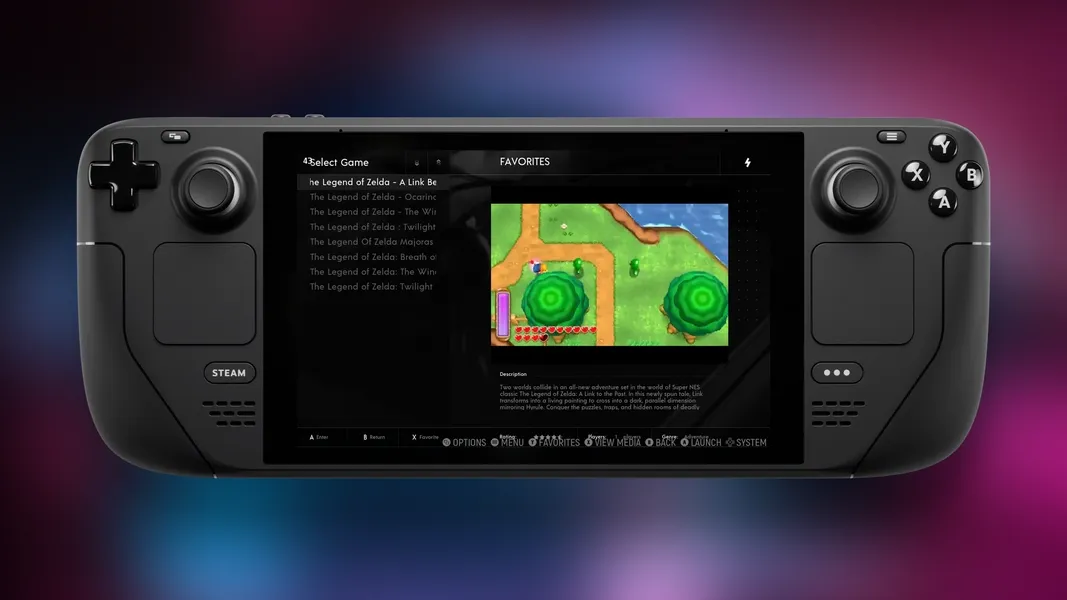
Compared to EmuDeck, installing RetroDeck is much more hands-off. All it needs is for you to install RetroDeck through the store. For this, you need to:
- Boot to the desktop. Click the
Steam button, go down toPower, and thenSwitch to Desktop. Wait for the Deck to reboot. - Click the
Menu button, go toDiscoverand search forRetroDeck. (If the keyboard doesn’t pop up, click theSteam Button + the X-button.) Install the app. - On the first install, you need to start
RetroDeckfrom the desktop. Do so, then follow the setup. But read carefully! - Like EmuDeck, you need to move your ROMs and BIOS files to the respective location.
/retrodeck/romsand /retrodeck/bios. I can’t tell you legally where to find these files exactly, but if you were to google forretroarch biosand stumble upon an Internet Archive link, you might be pleased. Move the unpacked files to their correct location. (Here are different ways to transfer files to your Steam Deck.) - Next, you want to add RetroDeck to the Steam Library. Open up
desktop Steam, go toLibrary, and at the bottom left corner click on the plus sign, thenAdd a Non-Steam Game.... Navigate to your installation folder and add RetroDeck to Steam. - Optionally you can use BoilR to add artwork to your library. You can find artwork at SteamGridDB.
- Boot back to
Game Mode, and always only start RetroDeck through this if you want to play.
That’s it. Nearly as many steps compared to EmuDeck but much less work. Whenever you want to update RetroDeck, go back to Desktop mode and update the app through Discover.
What next?
If you want to know, how to optimize Yuzu for the best Nintendo Switch emulation on Steam Deck, follow this guide right here:
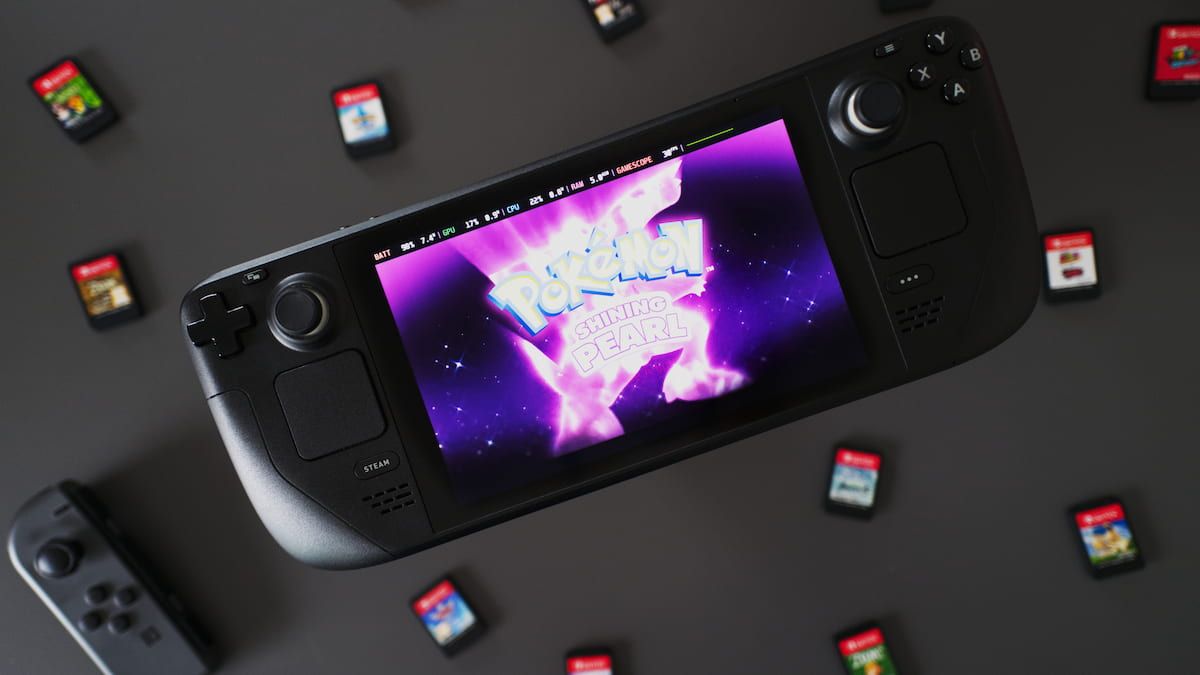
If you want to play either Ocarina of Time 3D or Majora's Mask 3D in 4K on Steam Deck, this is the guide for you:
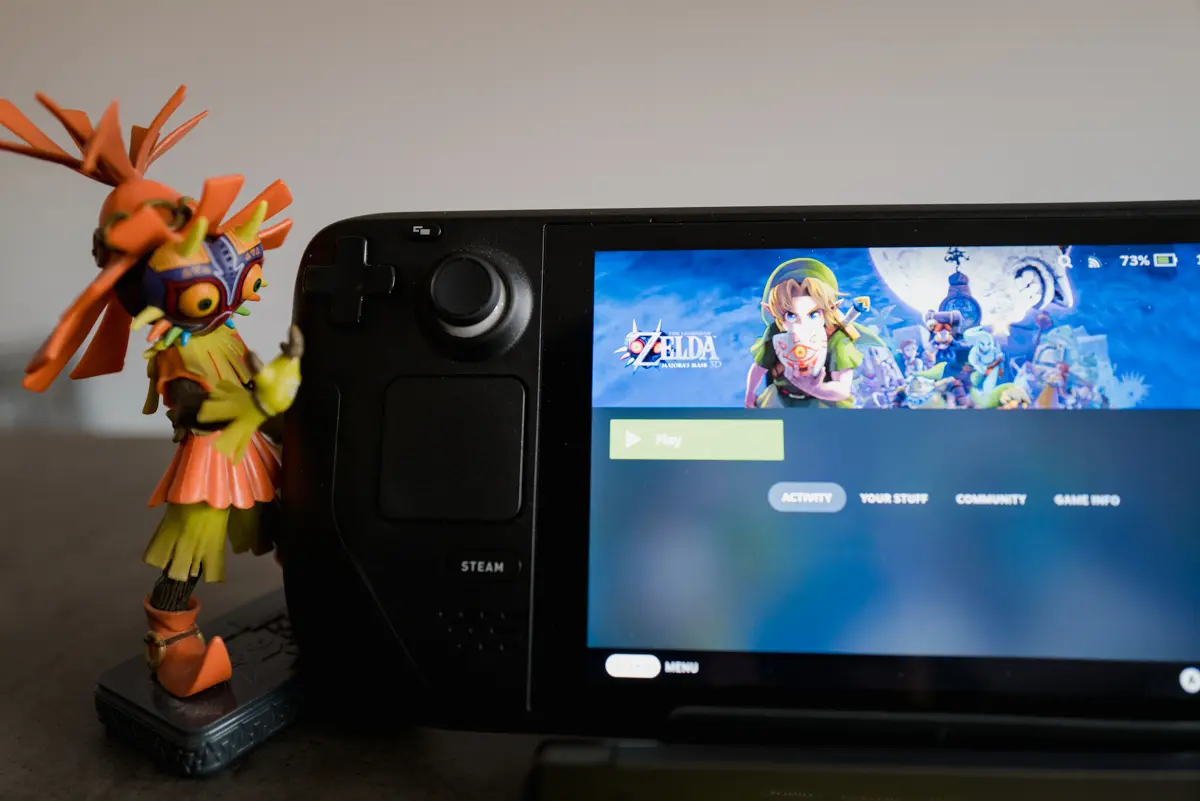
And if you need to move your ROMs to your Steam Deck, here is how to easily transfer files from your PC to your Deck!
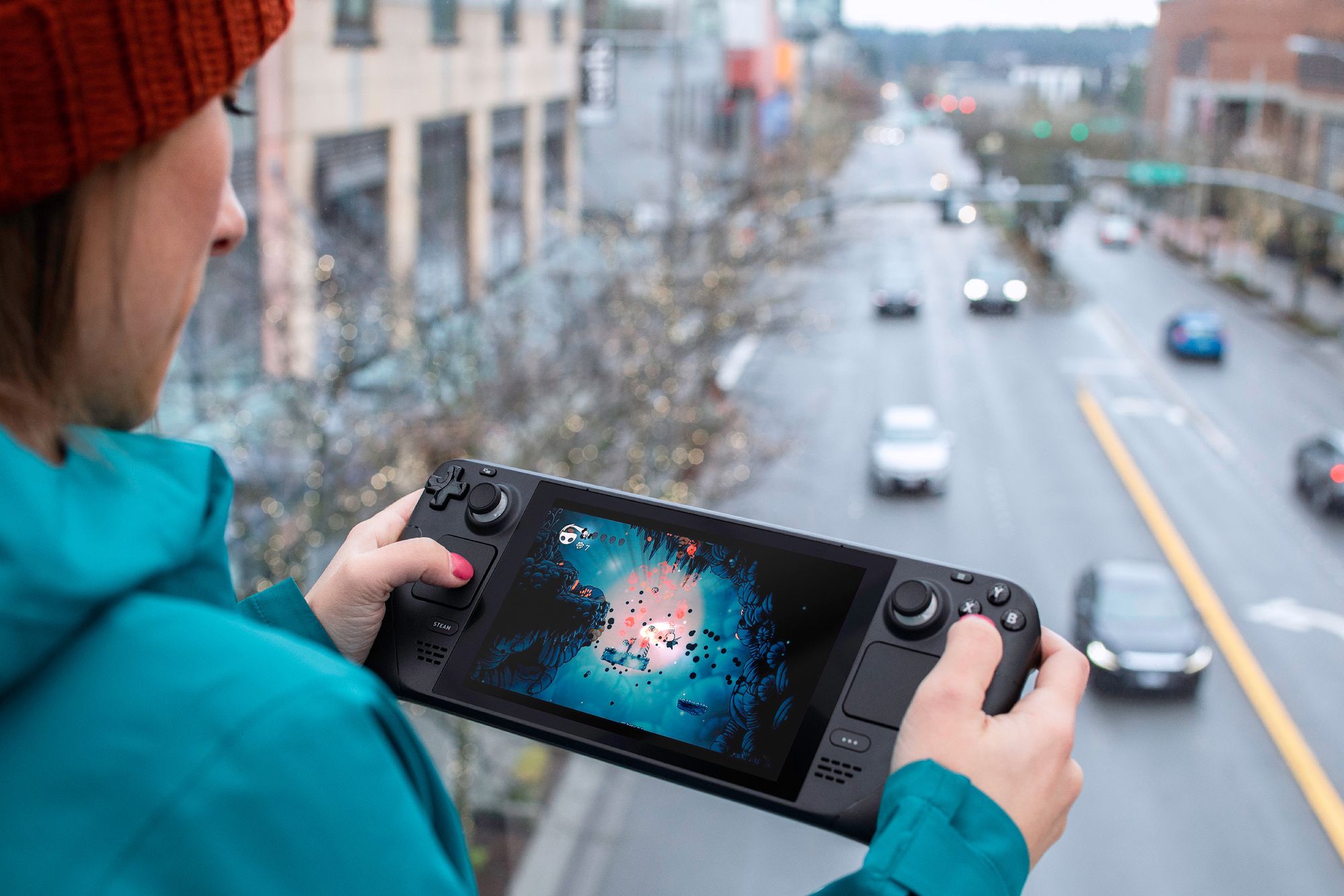
Enjoy your ROMs!
You can get support from the EmuDeck-Discord and RetroDeck-Discord.






